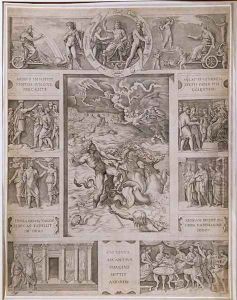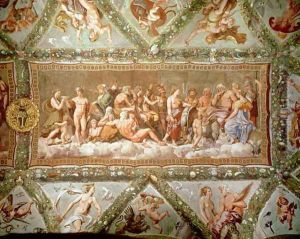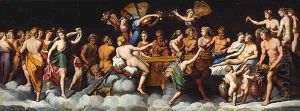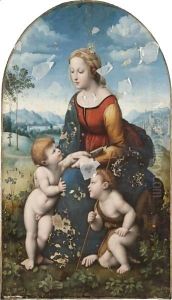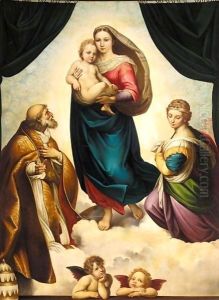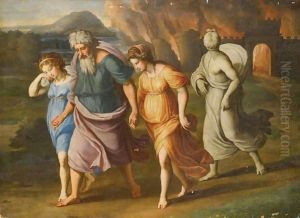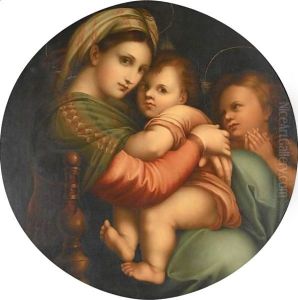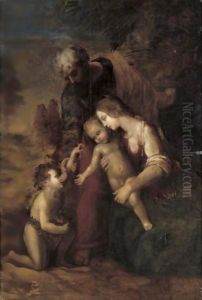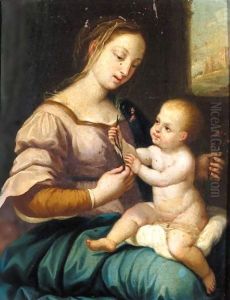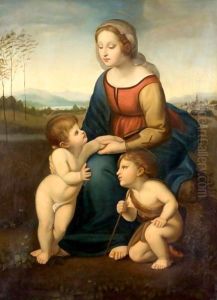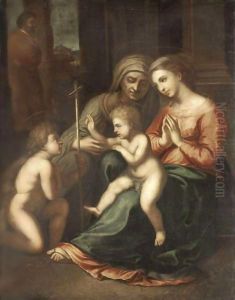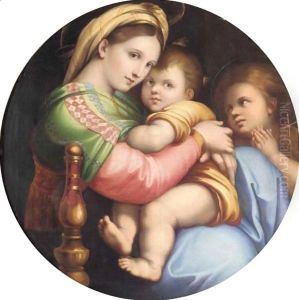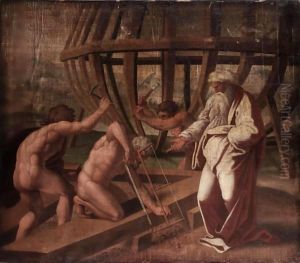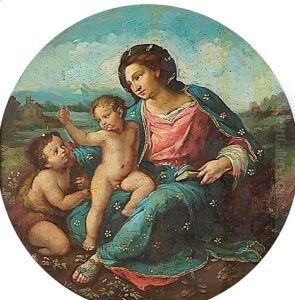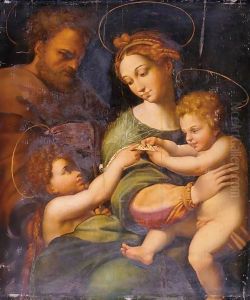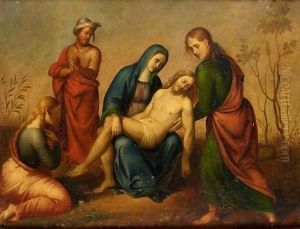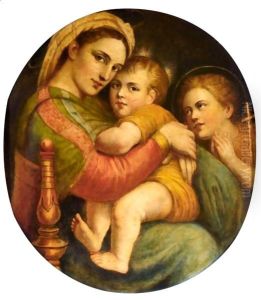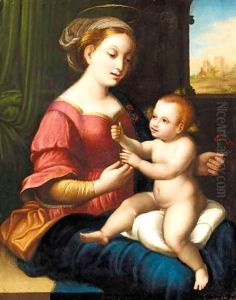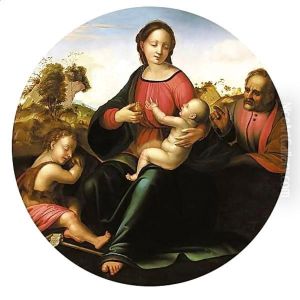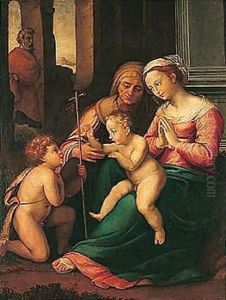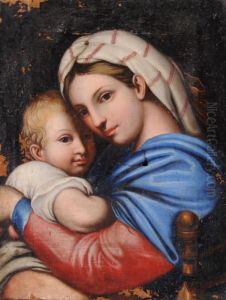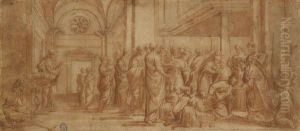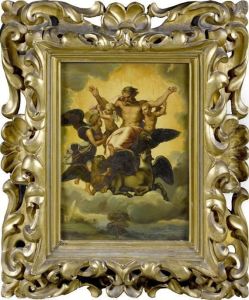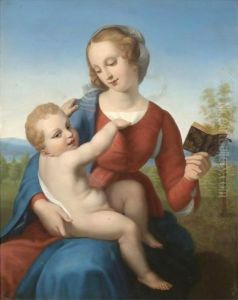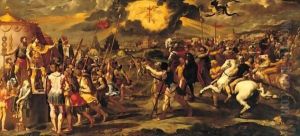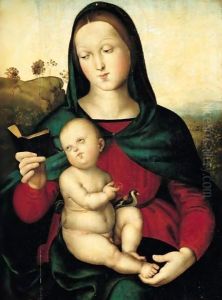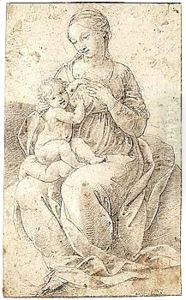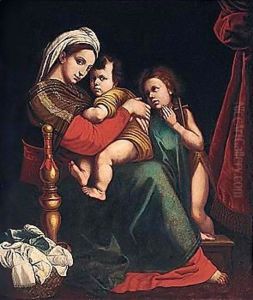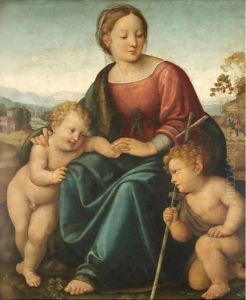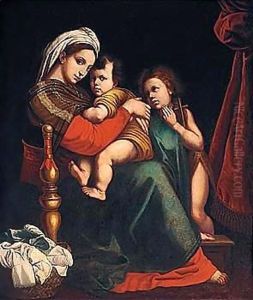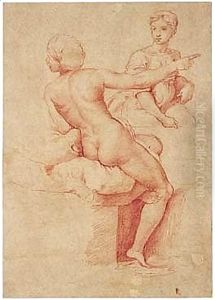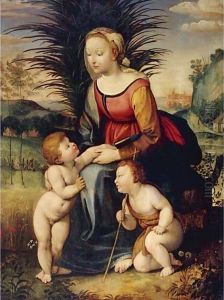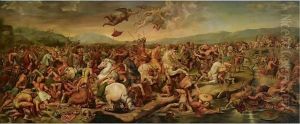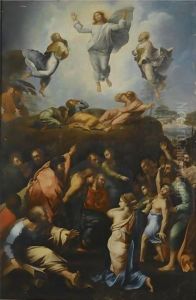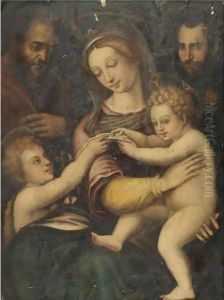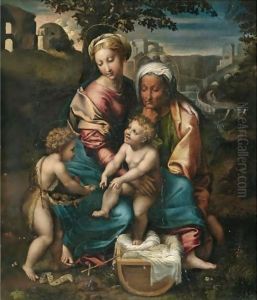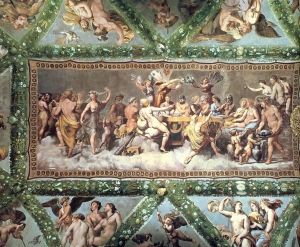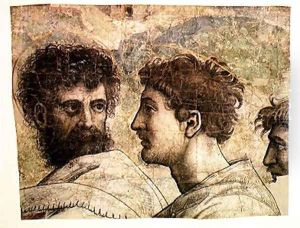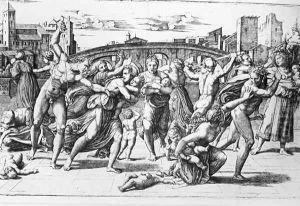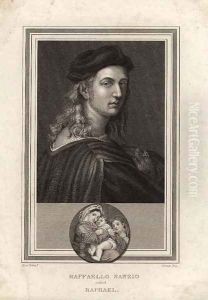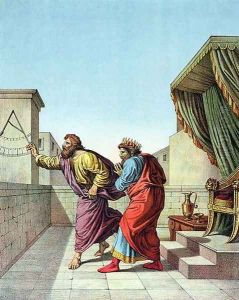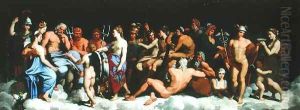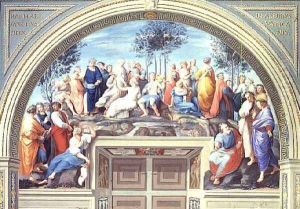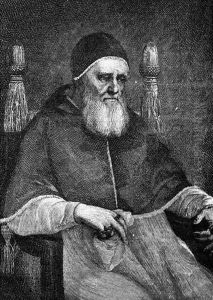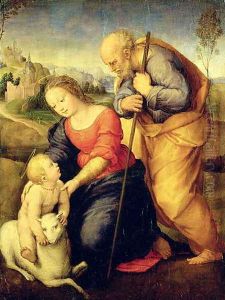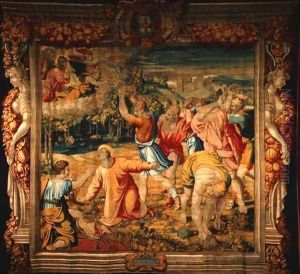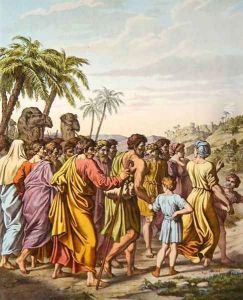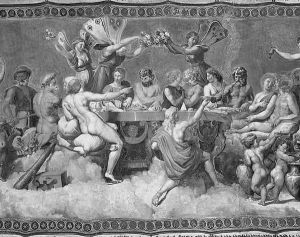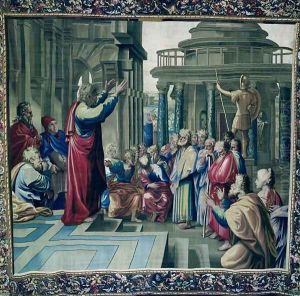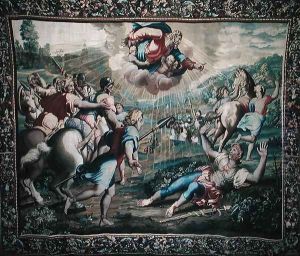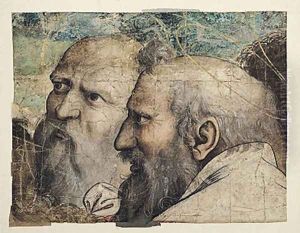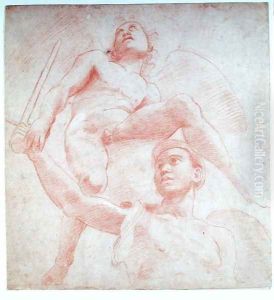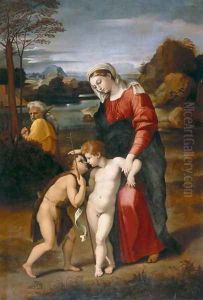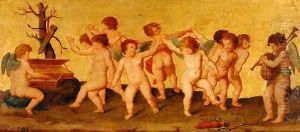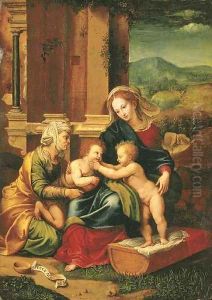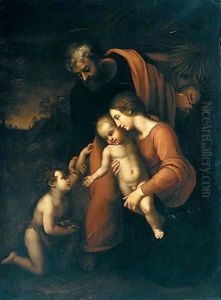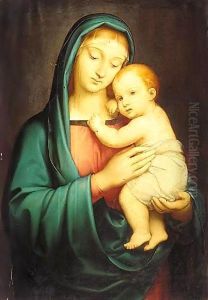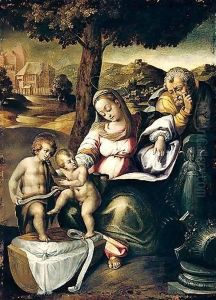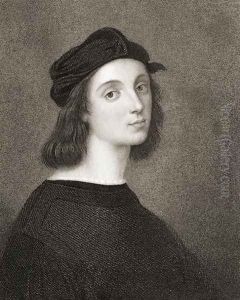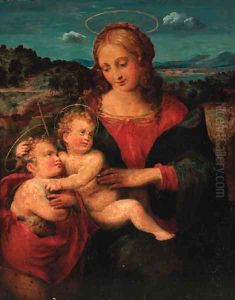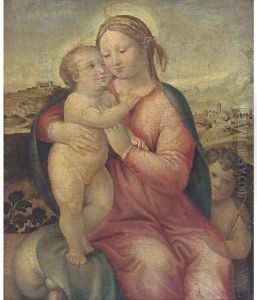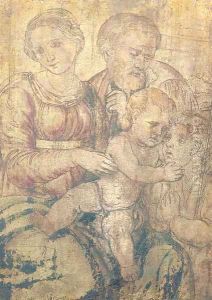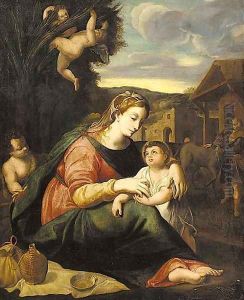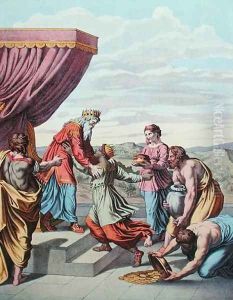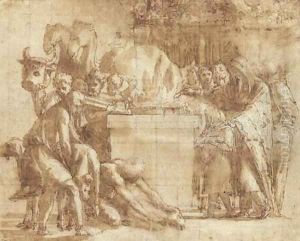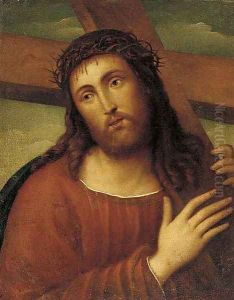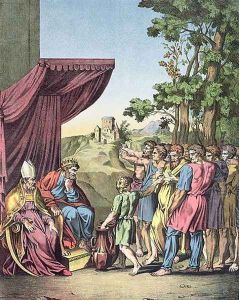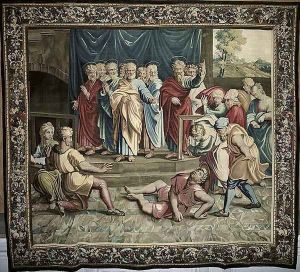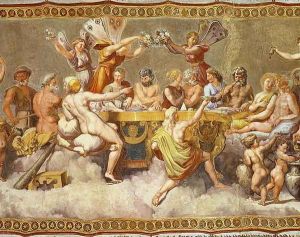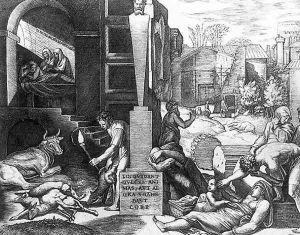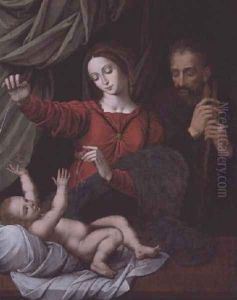Raphael (Raffaello Sanzio of Urbino) Paintings
Raphael, born Raffaello Sanzio of Urbino on April 6, 1483, in Urbino, Italy, was an Italian painter and architect of the High Renaissance. His work is admired for its clarity of form and ease of composition and for its visual achievement of the Neoplatonic ideal of human grandeur. Raphael was enormously productive, running an unusually large workshop, and despite his death at 37, he left a large body of work.
Raphael's father was Giovanni Santi, court painter to the Duke of Urbino, and his artistic training began in his father's workshop. His mother, Màgia di Battista Ciarla, died when Raphael was eight years old, and his father died three years later. Orphaned at eleven, Raphael's guardianship was taken over by his uncle Bartolomeo, a priest.
He is believed to have trained under the Umbrian master Pietro Perugino, and his early works resemble Perugino's so closely that some of Raphael's paintings were initially attributed to his teacher. By the age of 21, Raphael had moved to Florence, where he was influenced by the works of the Italian masters Leonardo da Vinci, Michelangelo, and Fra Bartolommeo. Raphael was known for his ability to assimilate the styles of these artists and yet maintain a personal style.
In 1508, Raphael moved to Rome, where he achieved fame and success. He was commissioned by Pope Julius II to fresco the Stanza della Segnatura in the Vatican Palace. These works, including 'The School of Athens', 'The Parnassus', and 'The Disputation of the Holy Sacrament', are considered some of his finest and most important. Raphael's development of classical and Christian themes in harmony with one another was groundbreaking and influential in the development of High Renaissance art.
Apart from his paintings, Raphael was also an accomplished architect, appointed as the chief architect of Saint Peter's Basilica in 1514 following the death of Donato Bramante. His work in architecture, though not as well-known as his paintings, had a lasting impact on Renaissance architectural style.
Raphael's later years were marked by the commission of the 'Raphael Rooms' and a large number of Madonnas, which demonstrate his exceptional skill in portraying the human figure and the use of color. His untimely death on April 6, 1520, his birthday, in Rome, was caused by a sudden illness. Raphael's influence was widespread during his own life and continued to be significant in the shaping of Western art long after his death.
